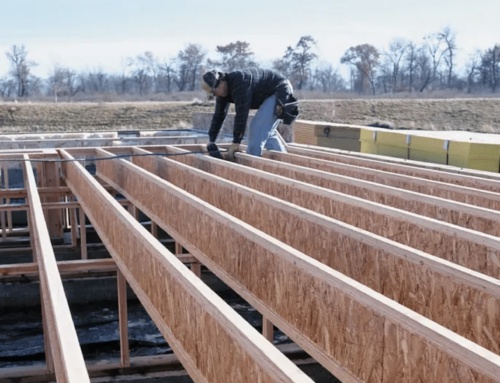It was only through the honorable support of North American Deck & Railing Association (NADRA)
that I was able to contribute the voice of the #decking industry to #collaboration with other interested parties in the continued creation of IRC #deck #buildingcodes
Did you catch that? COLLABORATION.I encourage everyone with an idea or opinion about the appropriate #minimumstandard for construction to participate in the ICC code development process. However, it is not a place for “winners or losers”. It’s not for you to “have things your way”. What I encourage is for you to bring your great ideas and combine them with everyone else’s great ideas.I developed these deck codes with others. I did not get everything I or the deck industry wanted. GOOD! Code development is not the place for champions on single-person, single-organization, or single-opinion podiums.
It’s the place for teamwork. This brief article is the result of teamwork by many diverse and differing opinions and experiences, and I am happy to have been ONE of them.
The 2021 edition of the International Residential Code is officially complete and ready for printing. Even though many building authorities are only now adopting the 2018 IRC as the local standard, the new prescriptive design provisions contained in the 2021 IRC can be approved by building authorities and used as soon as published. Here’s a look at its main provisions.
Table Updates
The pre-engineered design tables have been completely overhauled in a number of ways. For example, all of the structural components in a deck can now be prescriptively sized for more than just a 40-psf live load, with the addition of 50-, 60-, and 70-psf snow loads in all of the design tables.
Tributary area. Previously, for sizing footings, the smallest tributary area of deck listed was 20 square feet, so something as small as a stair landing needed a minimum 14-inch-diameter footing for each corner post. Now, Table R507.3.1 has been expanded to provide a smaller, 5-square-foot area to size from, bringing the minimum diameter down to as small as 8 inches.
Post sizing. Table R507.4 was greatly expanded. Previously, it did not consider any load or post species, so a 4×4 post was limited to an 8-foot height. Now allowing for variables such as snow load, species, and tributary area of deck supported, the table can more accurately size support posts. The common 4×4 post can now, under certain circumstances, extend as high as 14 feet.
Beam design. Table R507.5 was modified to include single-ply beams in all listed species, including redwood and cedar. Single-ply beams are useful for lighter loads and shorter spans, and they eliminate the potential for decay caused by water trapped between two or more beam plies.
Joist span. Table R507.6 was reorganized completely to better present the variables of joist span and joist cantilever. In addition, the “one-fourth-the-backspan” rule for joist cantilevers has been replaced with a maximum allowable cantilever for each common joist span. This change provides for more flexibility in design and more accuracy in the minimum sizes and spans.
Guards
For decades, guards and handrails have been combined together in the specifications for minimum load resistance, though each one supports people in different ways. The minimum live load table, R301.5, now separates these features, primarily so the loading direction of guards can be independently evaluated. While graspable stair handrails are meant to support us and must resist forces in all directions, guards that wrap around a deck are only meant to keep us from falling outward off the edge. Until the 2021 IRC, guards have had to resist 500-lb. loads “in all directions,” which has resulted in some robust connection details that wouldn’t be necessary for an inward load. Under the 2021 IRC, guards will no longer be required to resist forces pulling inward or upward.
The 2021 IRC will be the first I-code to provide any guidance on guard construction other than the load target and the geometry. Though guards function foremost as a safety feature, they are also an architectural feature, and the market for deck guard design is enormous. This makes prescriptive guard design a difficult and controversial subject.
Nevertheless, the new code specifically prohibits notched 4×4 guard posts, which historically have been attached to rim joists or beams with anything from lag screws to nails and with little validation of their performance beyond a small shove soon after construction. Time and tragedy have taught us that these guards don’t work, so the first step towards prescriptive design is prohibiting the notching of 4×4 guard posts at the connection point. In addition, code now requires that the connection extend back into the framing in some manner to help prevent a guard from pulling a rim joist off the ends of the joists or from rotating a single side joist.
About the Author:





